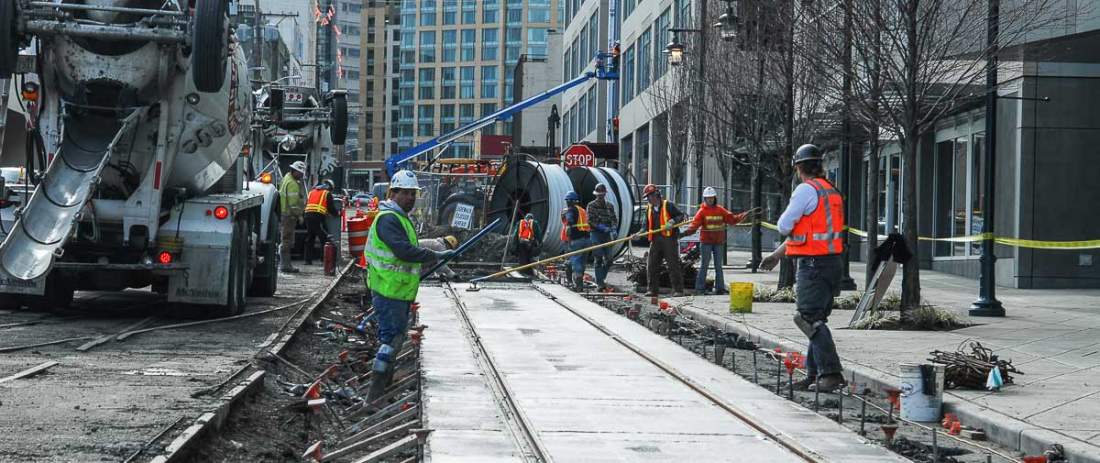
It’s not an exaggeration to say that technology has completely transformed the world during your lifetime. Whether you’re 22 or 62, even science fiction writers couldn’t have imagined everything that has changed or been invented while you’ve been around.
One small example: There’s more computing power in your smartphone than there was in the computers that landed the first man on the moon.
And technological advances are definitely not confined to the “high-tech” world. Construction may be the definition of a brick-and-mortar industry, but technology is helping it change and evolve.
Think about the all advances in that powerful smartphone; the same is true for the construction industry. Tools of all kinds evolve to adapt to new methods and materials. Technology has had an enormous impact on how we design, engineer and build structures.
In the traditional sense, you probably think of infrastructure as physical structures like roads and highways; bridges and dams; water, gas and oil pipelines; wastewater treatment plants; and communication networks and power grids. But infrastructure also includes technology. The power of the cloud, machine automation, the Internet of Things, big data and other technological developments are changing everything.
Check out just some of the things happening in construction today:
- Drones: Many construction sites are using drones for surveying, mapping and creating 3-D images of a project. They’re being used to record project progress and conditions, and as inspection tools to reach inaccessible parts of a project that require specific equipment. For example, drones can inspect bridges and other structures built over water. Drones can reduce costs and establish a safer working environment.
- BIM: Building Information Modeling (BIM) is a process that uses 3-D modeling as a basis to more efficiently plan, design, construct and manage buildings and infrastructure.
- Real-time collaboration: Connectivity through the cloud will let everyone involved in a project effectively work in one “virtual project office,” solving problems together before they happen on the job site.
- Autonomous vehicles: Both autonomous and semi-autonomous construction vehicles are being used more and more – dump trucks, wheel loaders, bulldozers, cranes and excavators.
- Wearable technology: Tech improvements can even extend to what you wear on the job:
- Smart hardhats incorporate 3-D visors that let you visualize a task within the physical context of the entire project. They can also record real-time video.
- Bionic suits let you pick up extra-heavy objects.
- Smart safety vests monitor your activity and alert you when you enter a hazard zone.
- Augmented reality (AR) and virtual reality (VR): These tools can create a composite view of a real-world environment, layering a computer-generated image on top of what you’re seeing in reality. This technology lets construction teams drastically improve their awareness of design inconsistencies, safety issues, defective work or materials, and many other site-related variables.
Ok, some of these concepts may seem a little like sci-fi. But they actually have real potential to enhance design, increase productivity, improve safety and even elevate quality in the construction industry.
The NWLETT Laborers Apprenticeship program will teach you traditional construction skills and techniques – but also give you a look into the exciting world of emerging construction technology. Laborers are consistently among the first in the industry to incorporate new tools and technology that increase productivity.
Learn more about the outstanding benefits of the Laborers Apprenticeship program.



Sorry, the comment form is closed at this time.